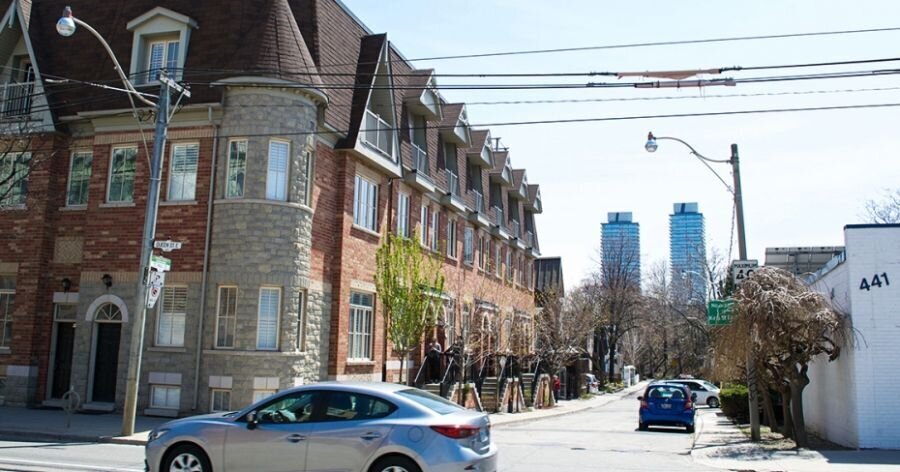The rules of the (mortgage) game just changed — again
By: Kyle Prevost on October 17, 2016
If you’re looking to break into the housing market or considering your next step up the housing ladder, you’ve likely heard that Canada’s federal government made some important changes last week. You’ve also heard that these changes are aimed at “cooling down” our record-breaking housing market.
But what you might not know is how those changes could affect your housing decisions going forward.
We don’t know exactly what the overall effect of these new rules will be in your specific neighborhood, but we can tell you the key info you’ll need to know moving forward.
It all starts with the insured mortgage
If you’re saving for a down payment on your first home, you should pay attention to the changes to insured and uninsured mortgages.
Buyers who put down less than 20% of a house’s purchase price are required to get an insured mortgage. Legally, you must have at least 5% of the home’s purchase price to get a mortgage, but if your down payment falls between 5% and 20%, you’re required to insure your mortgage. And it’s our federal government that’s largely responsible for administering this mortgage insurance through the Canada Mortgage and Housing Corporation, better known as CMHC.
Usually when you purchase insurance, it’s to protect yourself against a negative outcome. However, when you purchase mortgage insurance, it’s not for your protection — it’s for the lender’s.
Here’s the logic: because you couldn’t afford a larger down payment, you’re more at risk to default on your housing payments — an outcome lenders want to be protected against.
The new ‘stress tests’ aka holding everyone to a higher standard
To ensure Canadians don’t overextend themselves, the government introduced new ‘stress tests’. Under the new rules, the stress tests will now also apply to buyers with a down payment of 20% or more.
The rules essentially say that, no matter the current interest rates, buyers must qualify for the Bank of Canada’s (Boc) 5-year fixed posted mortgage rate. This rate is usually significantly higher than what consumers can find if they shop around a little. For example, the current BoC 5-year fixed rate is 4.64%, whereas a quick check on LowestRates.ca shows me that there’s a 2.17% 5-year fixed rate option available to Canadians in Ontario and Manitoba.
So basically, the government’s trying to install safeguards against a certain category of borrowers: people who take out the maximum amount they’re allowed to at a low interest rate and who will then struggle if interest rates climb from the current all-time lows. With the new stress test rules, homebuyers will have to be able to service larger mortgage payments, and, as a result, they’ll qualify for smaller mortgages. Read: the buying power of most first-time home buyers has significantly decreased.
Ottawa also has plans for high-risk buyers
High-risk buyers = borrowers with less than a 20% down payment (people who will also be subject to the stress tests). The feds will now only back these mortgages if:
The amortization period is less than 25 years
The mortgage is less than $1 million
The property is owner-occupied (sorry landlords!)
You have a credit score of 600.
These plans make sense, especially when you consider how much money is being risked in those situations and who’s on the hook for those mortgages if they default (we the taxpayers!).
And what’s happening with foreign buyers?
The media has been all over the ‘foreign buyers’ story, but I haven’t come across any compelling data that spells out the definition of a foreign buyer. Is a student living in Canada for 5+ years a foreign buyer? Nobody seems too sure.
But the government is clearly looking to curb the amount of money pouring into Canada’s housing markets. Their latest strategy is to enforce reporting regulations regarding the primary residence capital gains tax exemption.
Essentially, they’re trying to crack down on situations where buyers that live outside of Canada (or spend very little time here) are purchasing houses, claiming them as primary residences, and then selling them for profits that aren’t taxed.
The only effect this will have on most of us is that we’ll have to report the sale of our homes to the CRA. But fear not, sellers: it won’t change the tax-free status of the profit you make when you sell your home.
Talking the talk
The feds have also promised to engage with Canadian lenders on the concept of sharing more of the risk in regards to mortgages. On the surface, this doesn’t appear to have much of an effect on most of us. If anything, Canadians might sleep easier knowing that the lending companies actually have some skin in the game for a change.
However, there is some concern that this change could be the most important among them. There are unintended consequences that could result from lenders sharing the risk when it comes to mortgage prices. The main consequence is that this risk will have to be factored into the mortgage rates. Together with the other new regulations, these new lending risk rules could push discount mortgage lenders out of business and bolster the position of the big banks.
Talk about unintended outcomes.


.jpg?itok=tIiHyjyb)